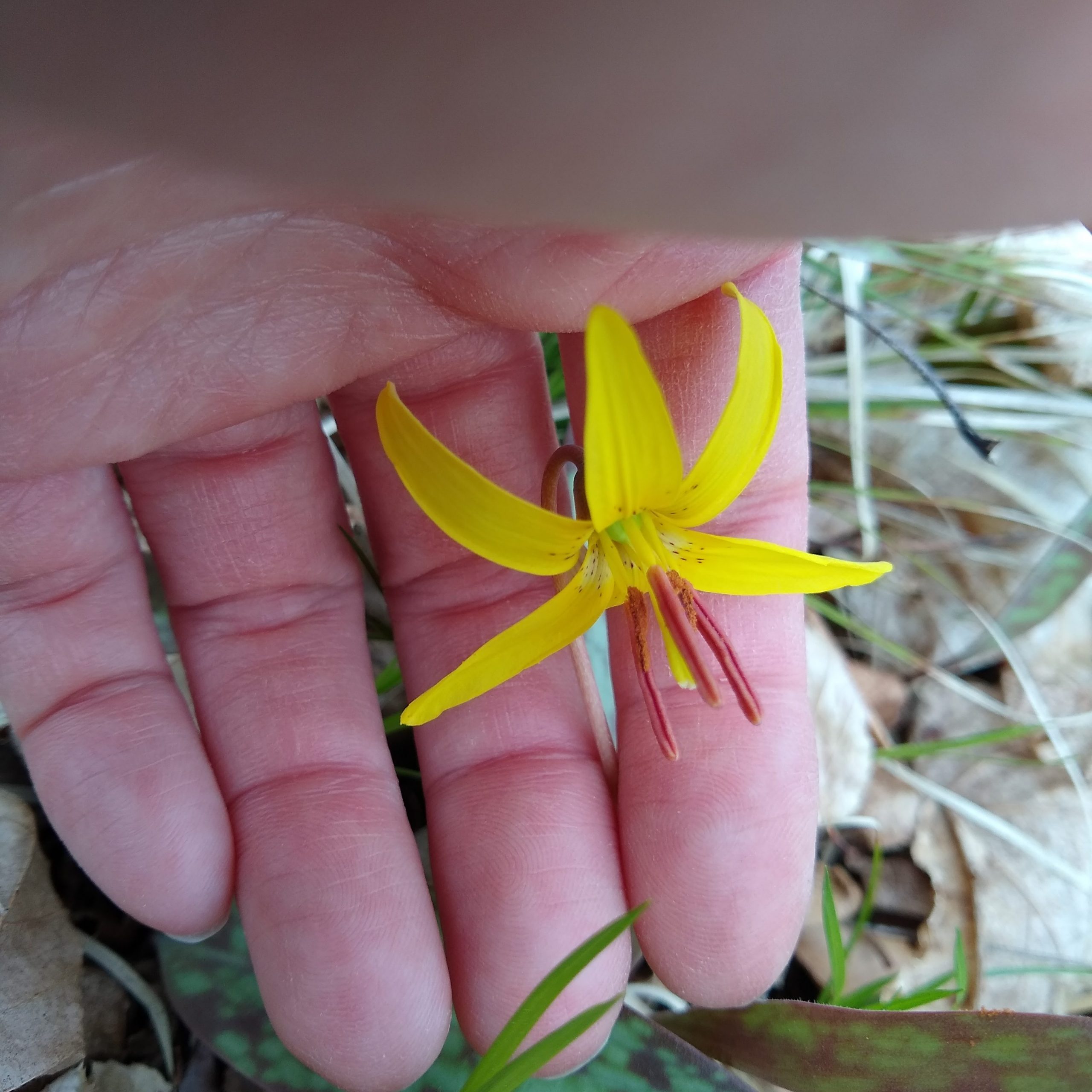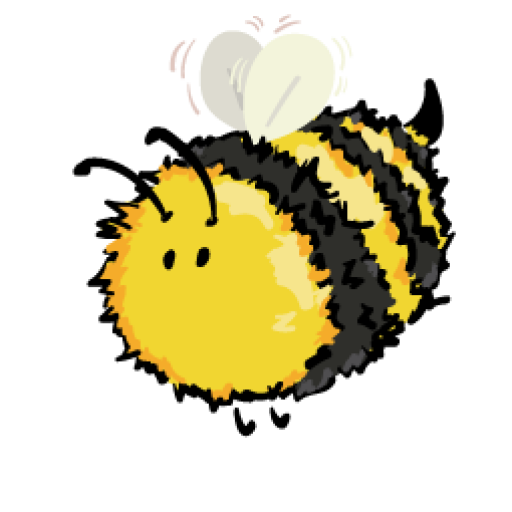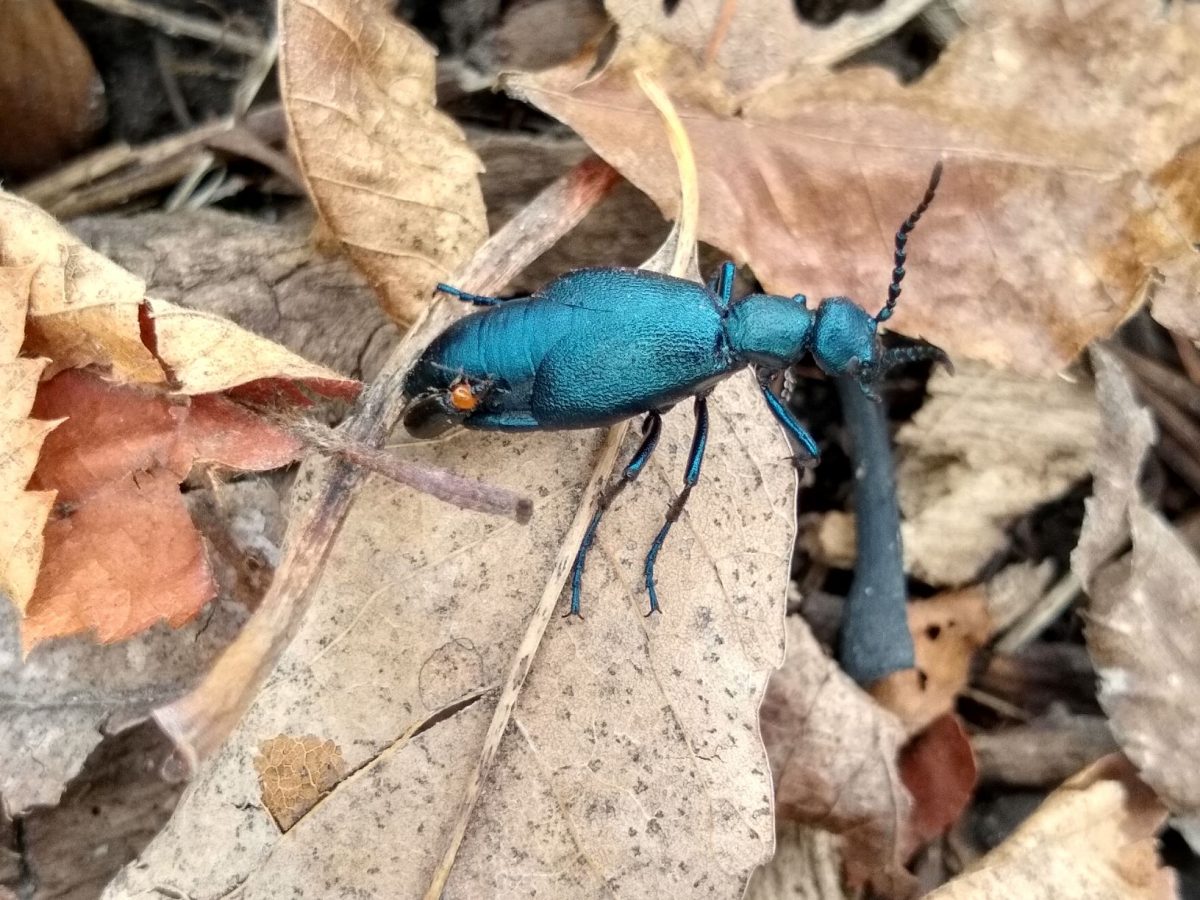It’s quite easy to walk our woods and see “nothing”. There are many months when the trees are bare and the ground is brown. Our walking trail is a loop, and it is not difficult for a human to walk in a circle and not see a deer. But that is only when we are chasing our (or their) tails, looking for what we know we might see, not what is there.
I was out on a brown dry leafy walk a few days ago when I came across this. A startlingly shiny large blue-teal beetle walking amongst the leaves at my feet. I recognized it from other encounters, but couldn’t remember the ID.

This is a Meloe — an “oil beetle”. Sometimes called a “blister beetle”. So called because it can release oily droplets that contain the chemical cantharidin. Cantharidin, on contact with skin, can cause swelling and painful blisters. Another critter best filed not under “handle with care”, but rather “do not disturb”.
But, on closer inspection, I noticed that something was in the middle of disturbing this Meloe. On its rumpside was another smaller beetle. You can see it in the photo below. That bitty black and orange bug on the backside appears to be biting the big’un.

I am not certain what kind of bug this little one is, though it may be an Oedemeridae, or false blister beetle. Apparently some bugs have been found parasitizing Meloe beetles in order to harvest their cantharidin and make use of it for themselves. But interestingly, if this is an Oedemeridae, it already produces cantharidin all on its own. I would say that perhaps that means it is just being a little jerk, but I have not found that to be nature’s way. There is nearly always a will, a purpose, even if we or I don’t know what it is yet. And don’t feel too bad for the Meloe beetle either — they are themselves parasites of solitary bees. An integral part of their life cycle is to have their larva catch a ride on an adult bee back to its nest, where the Meloe larva consumes the larval bees and/or their food stores.
As Annie Dillard put it so marvelously in her book, Pilgrim at Tinker Creek:
“Fish gotta swim and bird gotta fly; insects, it seems, gotta do one horrible thing after another. I never ask why of a vulture or shark, but I ask why of almost every insect I see. More than one insect–the possibility of fertile reproduction–is an assault on all human value, all hope of a reasonable god.”
~Annie Dillard
I don’t feel the same way as Annie does about the situation, but what a colourful slice of language pie.
One of the reasons I think this may be a false blister beetle is that apparently they are big fans of trout lilies, which are currently out in force, so it does fit that I would be noticing these wee fellas on the ground (or on beetles on the ground) this time of year.

If the false blister beetle is trying to obtain cantharidin, there may have been better candidates. The Meloe oil beetle in this photo is a female. Apparently you can tell by looking at the antenna — in females the antenna are relatively straight, whereas male antenna have a noticeable crook at the end. They use it to help hang on to females while mating.
Female Meloe beetles do not continue to generate cantharidin during their lives. Whatever they have as adults is leftover from their larval stages of development. But! They can refuel — thanks to the male Meloes. During mating, a male Meloe beetle will transfer more cantharidin to the female, and top up her reserves. She’ll saunter away from their tryst fully recharged with all that toxic goodness.
How cool is that??
…And you thought you wanted to see a deer. 😉
~Kate


2 replies on “Oil Beetles, They’re Pretty Slick”
Thanks for the story! There are so many mysteries in the natural world Mysteries to us anyway. These 2 beetles probably know exactly what’s going on.
Haha, yes! I bet they do. I’m sure I did say “what is going on here”, but I haven’t worked out yet how to hear their answer. 😉
So many mysteries, so many wonders! Today during my morning tea I was reading all about slugs, then went out to the garden to watch one breathe through its “pneumostome”. I also learnt about their “love darts”, which are quite a compelling read…